What is Deceptive Site Ahead warning? The “Deceptive Site Ahead” warning on Chrome and Firefox informs you that your web-browser is trying to open a fraudulent, misleading or malicious web-site. A list of these dangerous sites is automatically created by one of Google’s services, called Google Safe Browsing. This free service helps protect your internet browser by displaying “Deceptive Site Ahead” pop-up when you attempt to navigate to dangerous web-sites or download malicious apps or files.
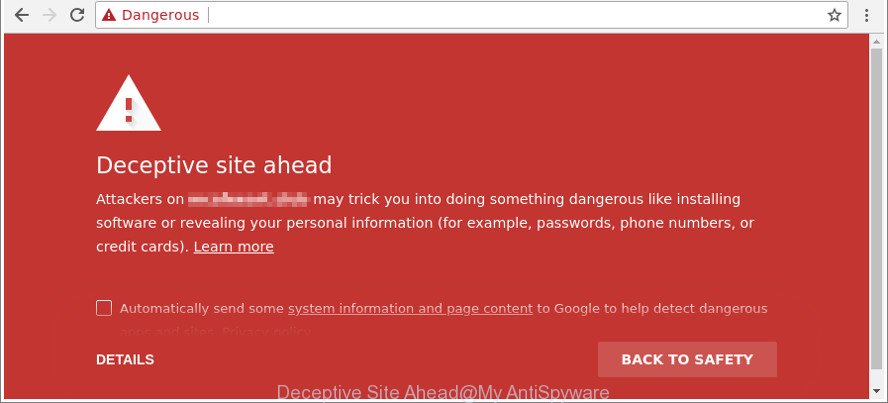
The “Deceptive Site Ahead” pop-up protect you from malicious and misleading web-sites
If you keep receiving the Deceptive Site Ahead warnings, when you surf the Web with the Google Chrome or Mozilla Firefox, then it is possible that adware (also known as ‘ad-supported’ software) was installed on your system. While your PC system is infected by adware, your web-browser can be redirected to undesired web-sites some of which are misleading and malicious web-sites. Google Safe Browsing detects this and your web-browser shows you the “Deceptive Site Ahead” warning.
Deceptive site ahead
Attackers on … may trick you into doing something dangerous like installing software or revealing your personal information (for example, passwords, phone numbers, or credit cards). Learn moreAutomatically send some system information and page content to Google to help detect dangerous apps and sites. Privacy policy
Of course, adware may not cause damages to your files or Windows system, but it may display a huge number of unwanted advertisements. These ads will be injected within the content of web-sites that are you opening in your web-browser and can be varied: pop-up ads, in-text ads, different sized banners, offers to install an questionable software. The ads will appear on all web sites, including web-sites where previously you have never seen any advertising links.
The worst is, adware be able to collect user information about you which can be later sold to third party companies. You don’t know if your home address, account names and passwords are safe.
The instructions below explaining steps to remove “Deceptive Site Ahead” pop-ups problem. Feel free to use it for removal of adware that may attack Firefox, Chrome and other popular browsers. The steps will allow you remove ad-supported software and thereby clean your internet browser from all intrusive advertisements.
Remove “Deceptive Site Ahead” pop ups (removal guide)
There are a simple manual tutorial below that will help you to remove “Deceptive Site Ahead” pop-up from your Microsoft Windows system. The most effective solution to get rid of this ad supported software is to complete the manual removal steps and then use Zemana Free, MalwareBytes Free or HitmanPro automatic tools (all are free). The manual way will assist to weaken this ‘ad supported’ software and these malware removal utilities will completely delete “Deceptive Site Ahead” pop ups and return the Google Chrome and Firefox settings to default.
To remove “Deceptive Site Ahead”, execute the steps below:
- Remove “Deceptive Site Ahead” pop-ups without any utilities
- Get rid of “Deceptive Site Ahead” popups with free software
- Use AdBlocker to stop “Deceptive Site Ahead” pop-ups
- Where adware comes from
- Finish words
Remove “Deceptive Site Ahead” pop-ups without any utilities
The useful removal steps for the “Deceptive Site Ahead” pop-ups. The detailed procedure can be followed by anyone as it really does take you step-by-step. If you follow this process to remove “Deceptive Site Ahead” pop ups let us know how you managed by sending us your comments please.
Uninstall suspicious applications using Windows Control Panel
First method for manual adware removal is to go into the Windows “Control Panel”, then “Uninstall a program” console. Take a look at the list of programs on your PC and see if there are any questionable and unknown software. If you see any, you need to remove them. Of course, before doing so, you can do an Internet search to find details on the application. If it is a potentially unwanted application, adware or malware, you will likely find information that says so.
Make sure you have closed all browsers and other applications. Press CTRL, ALT, DEL keys together to open the Windows Task Manager.

Click on the “Processes” tab, look for something questionable that is the ad supported software then right-click it and select “End Task” or “End Process” option. Most often, malware masks itself to avoid detection by imitating legitimate Windows processes. A process is particularly suspicious: it’s taking up a lot of memory (despite the fact that you closed all of your programs), its name is not familiar to you (if you are in doubt, you can always check the application by doing a search for its name in Google, Yahoo or Bing).
Next, delete any unknown and suspicious software from your Control panel.
Windows 10, 8.1, 8
Now, press the Windows button, type “Control panel” in search and press Enter. Select “Programs and Features”, then “Uninstall a program”.
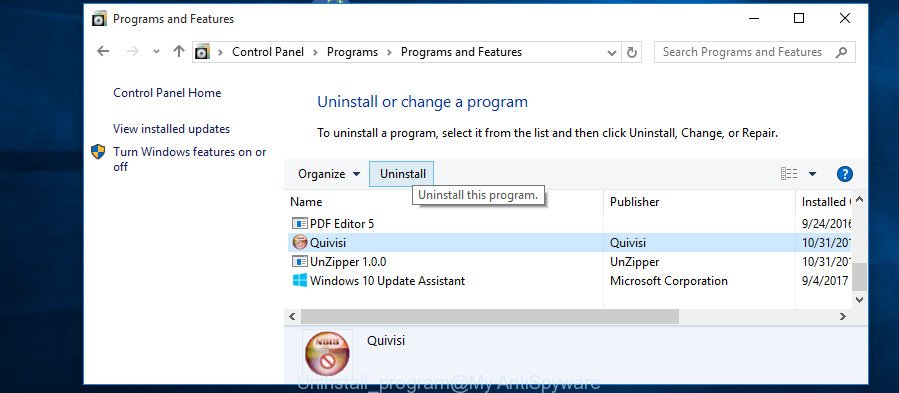
Look around the entire list of apps installed on your personal computer. Most probably, one of them is the ad supported software which causes annoying “Deceptive Site Ahead” popups. Choose the suspicious application or the program that name is not familiar to you and uninstall it.
Windows Vista, 7
From the “Start” menu in Windows, select “Control Panel”. Under the “Programs” icon, choose “Uninstall a program”.

Choose the questionable or any unknown software, then click “Uninstall/Change” button to remove this unwanted application from your personal computer.
Windows XP
Click the “Start” button, select “Control Panel” option. Click on “Add/Remove Programs”.
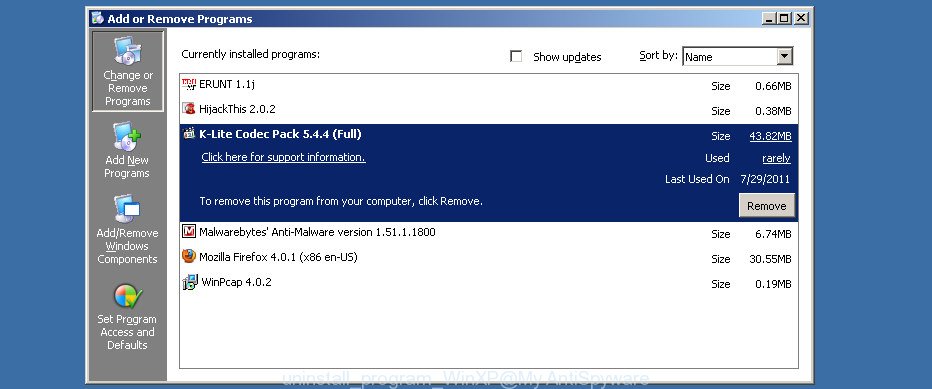
Select an undesired program, then press “Change/Remove” button. Follow the prompts.
Delete “Deceptive Site Ahead” from Firefox by resetting web-browser settings
If the Mozilla Firefox browser program is hijacked, then resetting its settings can help. The Reset feature is available on all modern version of Firefox. A reset can fix many issues by restoring Mozilla Firefox settings such as start page, newtab page and search engine by default to their original state. It’ll keep your personal information such as browsing history, bookmarks, passwords and web form auto-fill data.
First, open the Firefox. Next, click the button in the form of three horizontal stripes (![]() ). It will display the drop-down menu. Next, click the Help button (
). It will display the drop-down menu. Next, click the Help button (![]() ).
).

In the Help menu click the “Troubleshooting Information”. In the upper-right corner of the “Troubleshooting Information” page press on “Refresh Firefox” button as shown below.

Confirm your action, click the “Refresh Firefox”.
Remove “Deceptive Site Ahead” pop up from Google Chrome
Like other modern internet browsers, the Chrome has the ability to reset the settings to their default values and thereby recover the web browser’s settings that have been changed by the adware responsible for “Deceptive Site Ahead” pop-ups.
Open the Google Chrome menu by clicking on the button in the form of three horizontal dotes (![]() ). It will open the drop-down menu. Choose More Tools, then click Extensions.
). It will open the drop-down menu. Choose More Tools, then click Extensions.
Carefully browse through the list of installed addons. If the list has the extension labeled with “Installed by enterprise policy” or “Installed by your administrator”, then complete the following instructions: Remove Google Chrome extensions installed by enterprise policy otherwise, just go to the step below.
Open the Chrome main menu again, click to “Settings” option.

Scroll down to the bottom of the page and click on the “Advanced” link. Now scroll down until the Reset settings section is visible, as on the image below and press the “Reset settings to their original defaults” button.

Confirm your action, click the “Reset” button.
Get rid of unwanted Scheduled Tasks
If the “Deceptive Site Ahead” warning opens automatically on Windows startup or at equal time intervals, then you need to check the Task Scheduler Library and remove all tasks which have been created by adware.
Press Windows and R keys on your keyboard together. It will show a prompt that called Run. In the text field, type “taskschd.msc” (without the quotes) and click OK. Task Scheduler window opens. In the left-hand side, press “Task Scheduler Library”, like below.
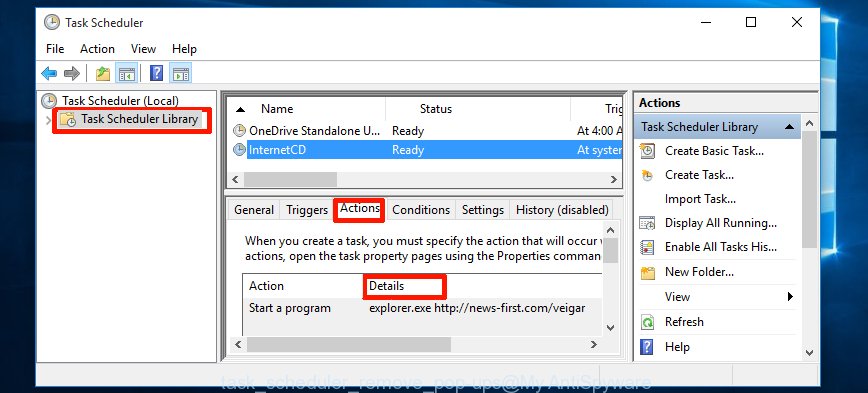
Task scheduler, list of tasks
In the middle part you will see a list of installed tasks. Select the first task, its properties will be open just below automatically. Next, click the Actions tab. Necessary to look at the text which is written under Details. Found something such as “explorer.exe http://site.address” or “chrome.exe http://site.address” or “firefox.exe http://site.address”, then you need remove this task. If you are not sure that executes the task, then google it. If it is a component of the adware, then this task also should be removed.
Further press on it with the right mouse button and select Delete as displayed in the figure below.

Task scheduler, delete a task
Repeat this step, if you have found a few tasks that have been created by adware. Once is finished, close the Task Scheduler window.
Get rid of “Deceptive Site Ahead” popups with free software
Many antivirus companies have created programs that allow detect adware and thereby remove “Deceptive Site Ahead” from the Chrome and Firefox. Below is a a few of the free programs you may want to use. Your PC system can have a ton of PUPs, adware and hijackers installed at the same time, so we recommend, if any unwanted or harmful program returns after rebooting the system, then start your machine into Safe Mode and run the antimalware tool again.
Scan and free your web-browser of “Deceptive Site Ahead” pop ups with Zemana Anti-malware
Zemana Anti-malware is a utility that can remove ‘ad supported’ software, PUPs, hijacker infections and other malicious software from your personal computer easily and for free. Zemana Anti-malware is compatible with most antivirus software. It works under Windows (10 – XP, 32 and 64 bit) and uses minimum of PC resources.

- Visit the following page to download the latest version of Zemana for MS Windows. Save it on your Windows desktop.
Zemana AntiMalware
164806 downloads
Author: Zemana Ltd
Category: Security tools
Update: July 16, 2019
- At the download page, click on the Download button. Your web-browser will show the “Save as” dialog box. Please save it onto your Windows desktop.
- When downloading is finished, please close all applications and open windows on your personal computer. Next, start a file called Zemana.AntiMalware.Setup.
- This will open the “Setup wizard” of Zemana onto your computer. Follow the prompts and don’t make any changes to default settings.
- When the Setup wizard has finished installing, the Zemana Free will launch and open the main window.
- Further, click the “Scan” button to perform a system scan for the ad supported software. A scan may take anywhere from 10 to 30 minutes, depending on the number of files on your machine and the speed of your PC. While the Zemana Free application is scanning, you can see how many objects it has identified as threat.
- When Zemana Free has completed scanning, Zemana Free will show a scan report.
- Review the scan results and then click the “Next” button. The utility will delete adware and add items to the Quarantine. When the clean-up is finished, you may be prompted to reboot the PC system.
- Close the Zemana Free and continue with the next step.
Remove “Deceptive Site Ahead” popups from internet browsers with Hitman Pro
HitmanPro is a free application which developed to remove malware, PUPs, hijackers and ad-supported software from your computer running MS Windows 10, 8, 7, XP (32-bit and 64-bit). It will help to detect and remove adware, including its files, folders and registry keys.
Installing the HitmanPro is simple. First you’ll need to download Hitman Pro by clicking on the following link.
When downloading is finished, open the folder in which you saved it. You will see an icon like below.

Double click the HitmanPro desktop icon. After the utility is launched, you will see a screen as shown below.
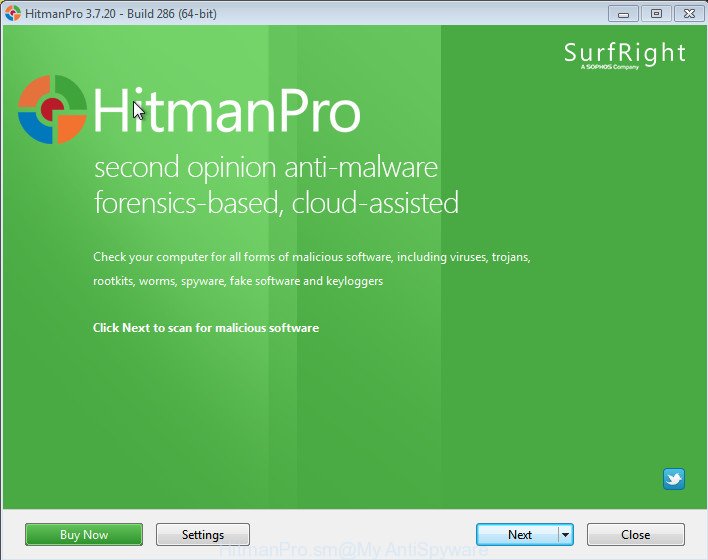
Further, press “Next” button to perform a system scan with this utility for the adware which created to redirect your internet browser to deceptive web-sites. After the scan get completed, a list of all items found is created as shown in the figure below.
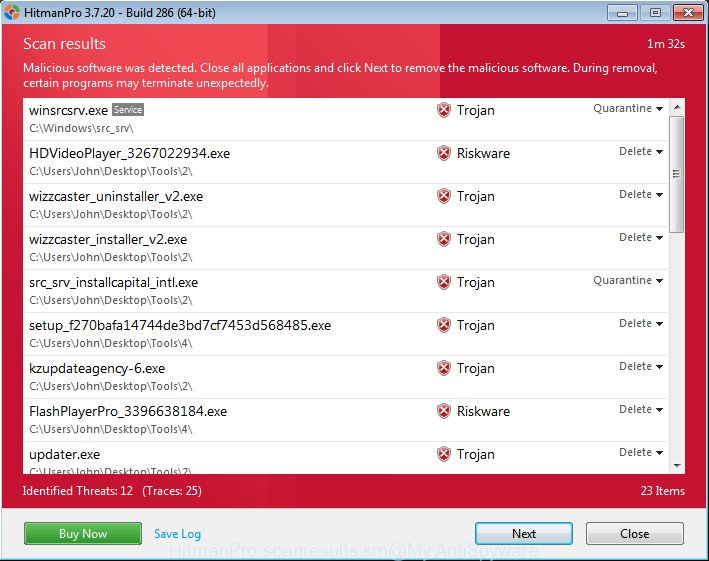
In order to delete all items, simply click “Next” button. It will open a prompt, click the “Activate free license” button.
How to automatically remove “Deceptive Site Ahead” pop-ups with Malwarebytes
Manual “Deceptive Site Ahead” pop up removal requires some computer skills. Some files and registry entries that created by the adware can be not completely removed. We recommend that run the Malwarebytes Free that are completely clean your system of ad supported software. Moreover, the free application will help you to get rid of malware, PUPs, browser hijacker infections and toolbars that your machine may be infected too.
Visit the following page to download MalwareBytes. Save it on your Windows desktop or in any other place.
327059 downloads
Author: Malwarebytes
Category: Security tools
Update: April 15, 2020
Once the download is complete, close all windows on your personal computer. Further, launch the file called mb3-setup. If the “User Account Control” prompt pops up like below, click the “Yes” button.

It will show the “Setup wizard” that will assist you setup MalwareBytes Anti Malware (MBAM) on the computer. Follow the prompts and do not make any changes to default settings.
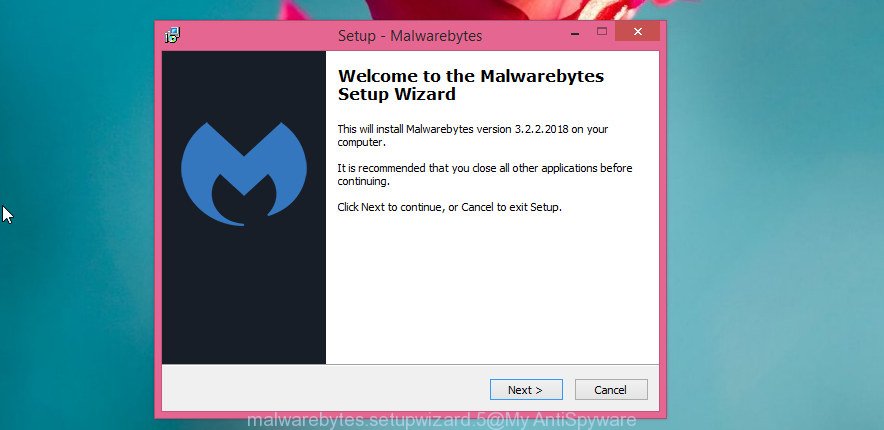
Once setup is finished successfully, click Finish button. Then MalwareBytes will automatically run and you can see its main window like below.
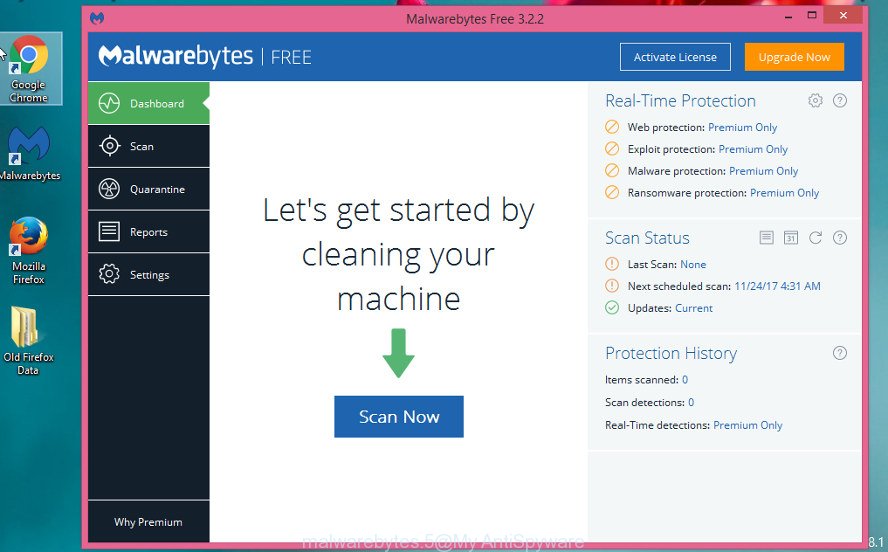
Next, press the “Scan Now” button to perform a system scan for the adware that causes annoying “Deceptive Site Ahead” pop-up. This process can take some time, so please be patient. When a malware, ad supported software or potentially unwanted apps are detected, the number of the security threats will change accordingly. Wait until the the scanning is finished.
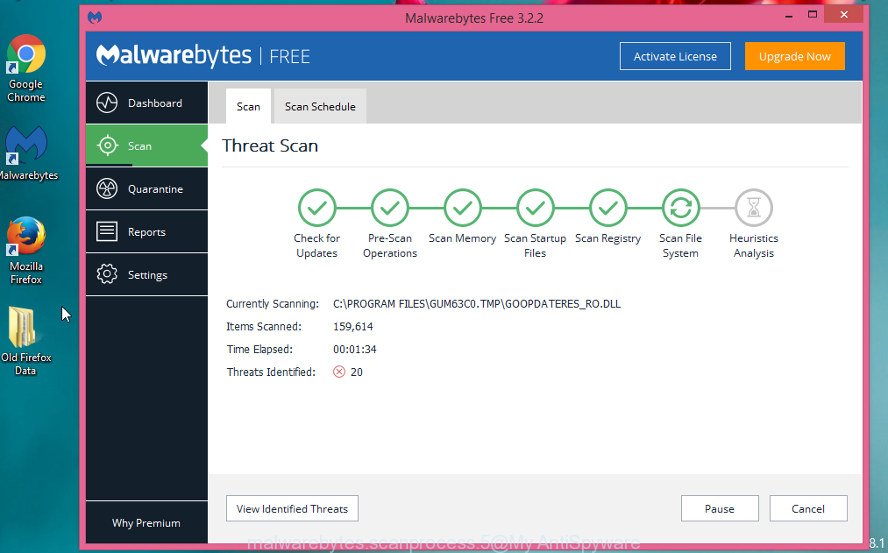
Once MalwareBytes Anti-Malware (MBAM) completes the scan, MalwareBytes Anti Malware (MBAM) will create a list of undesired applications ad supported software. When you’re ready, click “Quarantine Selected” button.
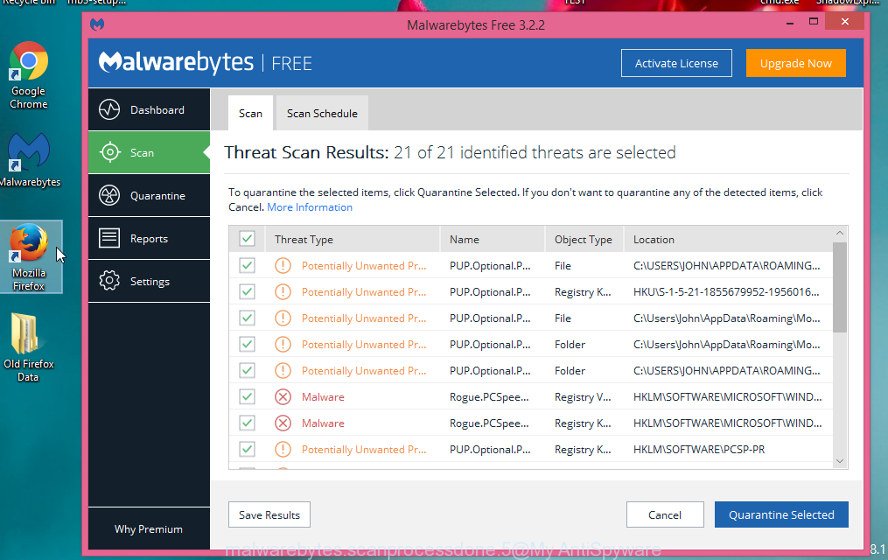
The MalwareBytes Free will get rid of adware that causes multiple undesired pop-ups. Once disinfection is finished, you can be prompted to reboot your system. We suggest you look at the following video, which completely explains the process of using the MalwareBytes Free to get rid of hijackers, adware and other malicious software.
Use AdBlocker to stop “Deceptive Site Ahead” pop-ups
In order to increase your security and protect your computer against new undesired ads and harmful websites, you need to run ad blocking program that stops an access to malicious ads and web sites. Moreover, the program can stop the show of intrusive advertising, that also leads to faster loading of sites and reduce the consumption of web traffic.
- Installing the AdGuard is simple. First you will need to download AdGuard from the following link. Save it to your Desktop so that you can access the file easily.
Adguard download
26841 downloads
Version: 6.4
Author: © Adguard
Category: Security tools
Update: November 15, 2018
- After downloading it, start the downloaded file. You will see the “Setup Wizard” program window. Follow the prompts.
- After the install is complete, click “Skip” to close the installation program and use the default settings, or click “Get Started” to see an quick tutorial which will help you get to know AdGuard better.
- In most cases, the default settings are enough and you do not need to change anything. Each time, when you run your PC, AdGuard will start automatically and stop unwanted pop-up ads, as well as other malicious or misleading web-sites. For an overview of all the features of the program, or to change its settings you can simply double-click on the icon named AdGuard, which is located on your desktop.
Where adware comes from
These days certain free programs authors bundle third-party programs which could be adware, with a view to making some money. These are not free applications as install an unwanted applications on to your Windows PC. So whenever you install a new free application that downloaded from the Internet, be very careful during installation. Carefully read the EULA (a text with I ACCEPT/I DECLINE button), select custom or manual installation method, reject all bundled applications.
Finish words
Once you’ve complete the few simple steps above, your PC system should be free from adware and other malware. The Google Chrome, Edge, Mozilla Firefox and Internet Explorer will no longer redirect you to deceptive web-sites. Unfortunately, if the step-by-step guidance does not help you, then you have caught a new ‘ad supported’ software, and then the best way – ask for help here.




















